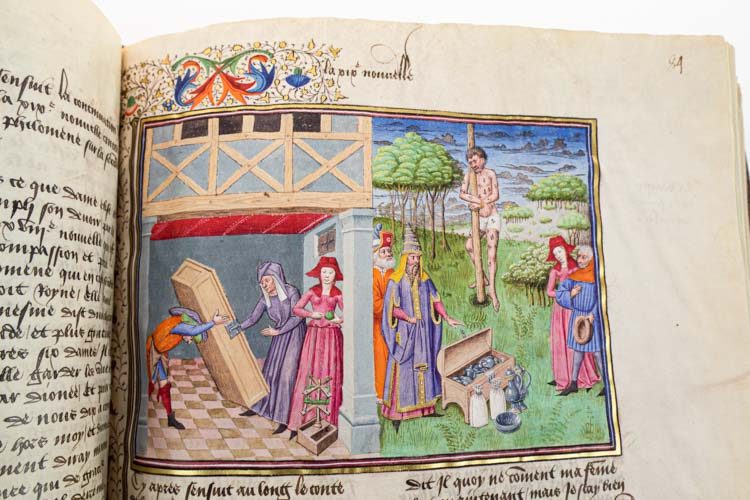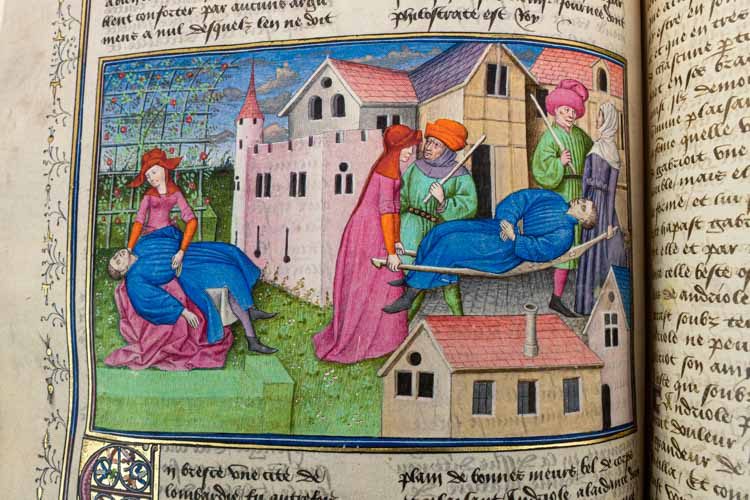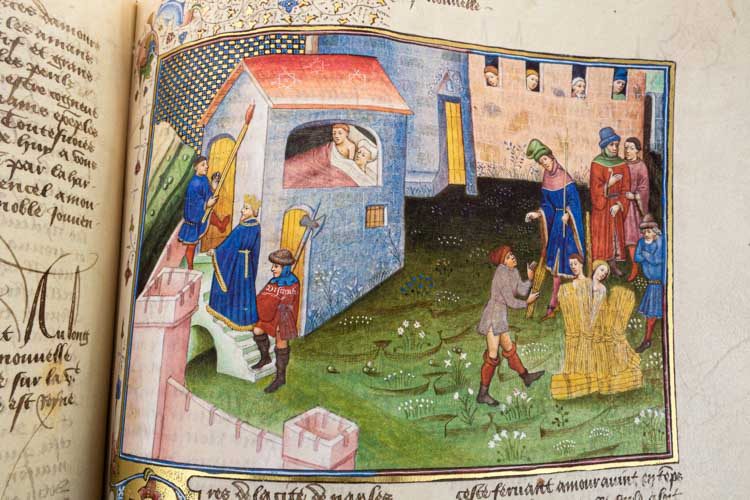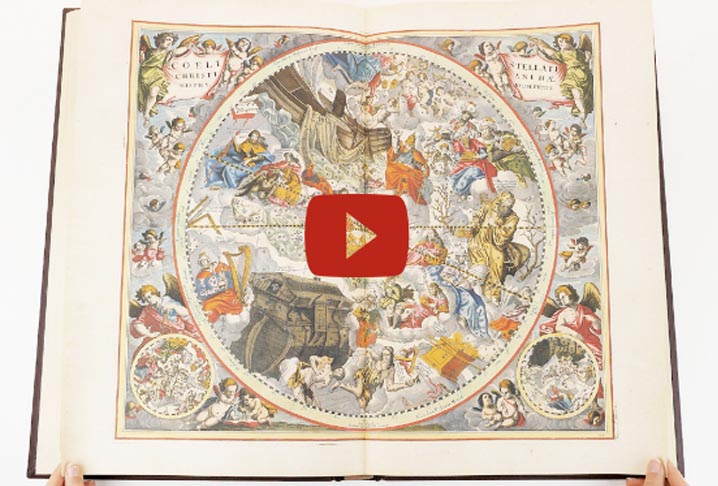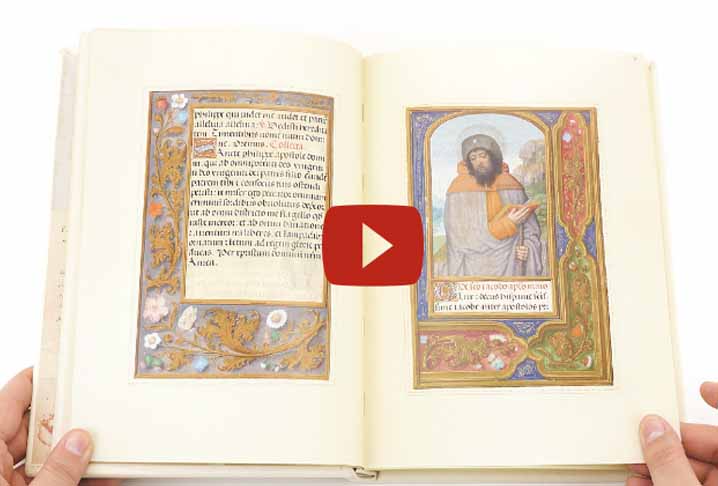Seven hundred years ago during the Black Plague, one of the fathers of European literature taught the world a unique way to survive during a lockdown: telling each other humorous and extravagant stories. The work soon became acclaimed and inspired a magnificent French manuscript.
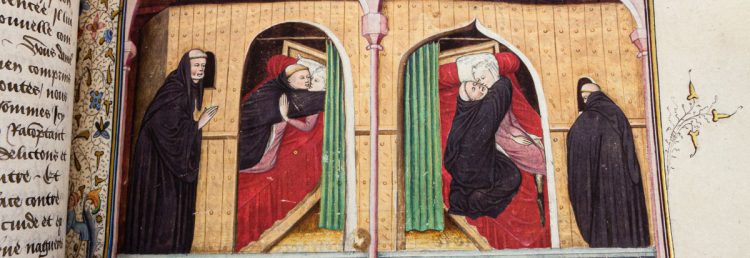
While most of the world is forced to sit at home and avoid all kinds of social contact, we asked ourselves what art and history lovers can do with their time now that many museums have shut their doors. Something the pandemic cannot take away from us is the joy we find in the things we treasure the most, and for us, that means browsing through age-old manuscripts and discovering new insights in the history of miniature. The Middle Ages have taught us that there are countless ways to build our resilience in the face of epidemics, which were then less rare but not less disastrous.
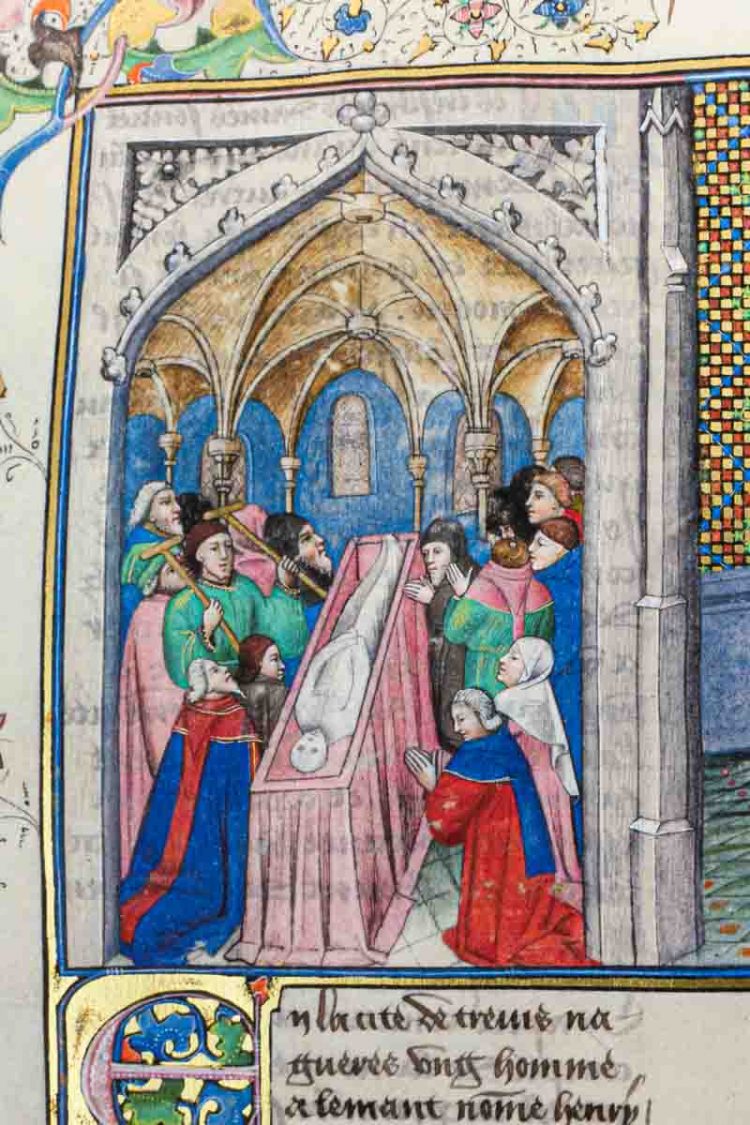
The last day before the lockdown in Italy began — after which we all started working from home — we consulted a facsimile of one of the masterpieces of Italian and European literature, namely the Decameron by Giovanni Boccaccio. Written in 1353, in the wake of the Black Plague that wiped out half of Florence’s population, this collection of 100 stories is built exactly on the premise that art — in this case, literature — can help us overcome what seems to have no solution at all, simply by captivating our imagination and helping us travel with our minds. The ten main characters escape the Plague by fleeing to a villa outside Florence, where they spend time telling each other stories.
While we flipped in awe through the volume’s dozens of miniatures — inspired by another, previous manuscript of the Decameron kept in the Vatican Library and known as Decameron Vaticano — we found ourselves laughing and wondering how Boccaccio managed to liven up not just his characters’ quarantine — but also our own isolation, more than 600 years later.
We wish the three humorous stories we are about to share with you will help you look on the lighter side of things, even during this complicated time. In this volume, readers are invited to contemplate particular lives through the doors, the open windows, the galleries of houses as if they themselves were intruding into their intimacy.
Fourth day, novel 9: On lord Guillaume de Roussillon, who fed his wife her lover’s heart
In Provence there were once two brave, noble knights who were also great friends, Guillaume de Roussillon and Guillaume de Cabestaing. One day, Cabestaing fell in love with Roussillon’s wife, and they started meeting in secret. When her husband found out, his affection for his friend soon turned into hatred.
During a tournament, Roussillon attacked his friend, running him through with his sword and tearing out his heart. Back at the castle, he ordered his cook to prepare the best dish he could with the heart, which he said belonged to a boar he had killed in the woods. His wife was waiting for her lover, but found out from her husband that he would not be coming.
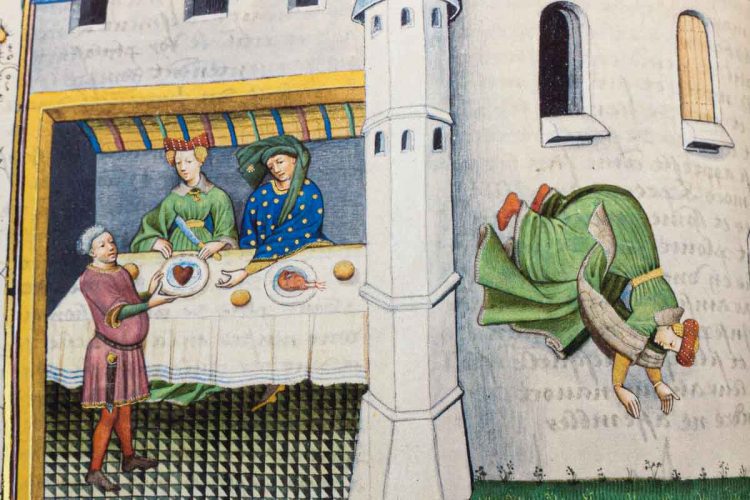
In the evening, at the dining table, Roussillon pretended not to be hungry, and let his wife eat her lover’s heart, which she found delicious.
Her husband asked her: «What do you think about this dish my dear? Isn’t it delicious?» «I liked it a great deal» she replied. And the knight went on: «It is no wonder that you should enjoy him now as much as you did when he was alive.»
The anguished woman threw herself out of the window. Before the drama could become public knowledge, Roussillon fled the country.
Eighth day, novel 5: On the poor Florentine judge and his breeches
This novel portrays the avarice of certain governors in Florence, who drag along the judges of lower rank with them in their ways. This was the case of a certain Niccola da San Lepidio, a judge at the criminal courts whom three friends decide to play a trick on. The idea came to Maso del Saggio and two of his friends, who decided to pull off his breeches.
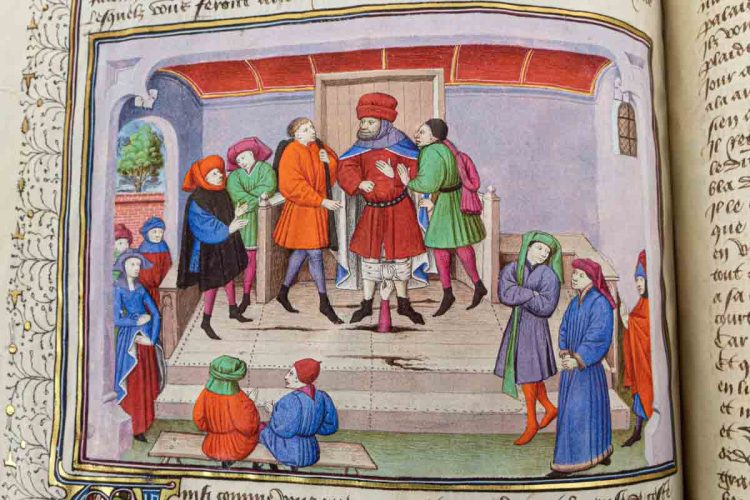
During a hearing, two of the friends got close to the judge, each pulling aside a tail of his robe, while the third, hidden under the dais, tugged down his breeches through the gap in a broken planking floor.
The wags pretended to argue in order to distract the judge’s attention, and he was finally completely undressed and had to put his clothes back on in front of them all.
Ninth day, novel 10: On a lady whom a priest wanted to turn into a mare
In Barletta — a town in southern Italy — there was a very poor priest who, to help pay for his needs, used his mare to transport the goods that he took from fair to fair.
He became friends with a poor peasant from Tresanti, a certain master Pietro. Both of them visited each other from time to time. But master Pietro only had one poor bed at his house, and the priest had to sleep in the stables with his mare and the master’s ass.
When Pietro’s wife Gemmata proposed letting him have the bed that she shared with her husband, the priest jokingly replied: «Don’t worry. Whenever I want, I can turn my mare into a lovely girl and then I turn her back into a horse!»
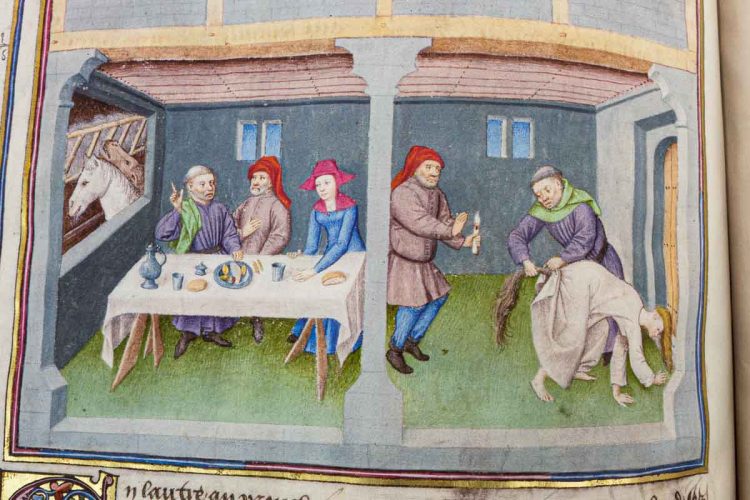
But master Pietro and Gemmata took him seriously, and asked him to show how he could make a beautiful woman out of a mare. They thought that this would mean that from time to time Gemmata could become a mare and help them transport goods.
The priest laughingly accepted, warning them not to say a word about it. He had the young wife take her clothes off, prodded her all over while he murmured spells, and finally, under the pretext of giving her a mare’s tail, thrust his own tail into her.
But at this point the husband broke in, shouting, with the excuse that a tail did not go on a mare at that height! And the spell was broken, much to the young lady’s regret.
NEW WEEKLY VIDEOS
Find our more about Harmonia Macrocosmica (Darmstadt, Universitäts- und Landesbibliothek Darmstadt) on our website!
Find our more about the Prayer Book of John Albert I, Duke of Mecklenburg (Kassel, Universitätsbibliothek Kassel) on our website!


